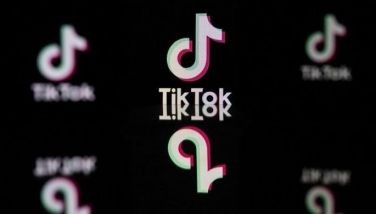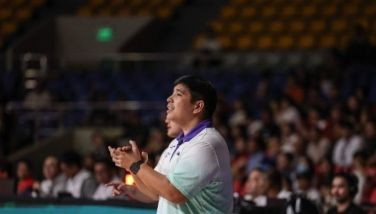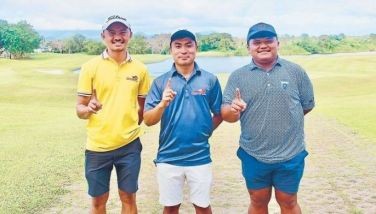The Asian Development Bank – 50 years in Manila

The first half-century of successful existence of the Asian Development Bank (ADB) is being celebrated this year. Since its founding, the bank’s headquarters has been in Manila.
Hesitant beginnings. As a project, the ADB had hesitant beginnings. However, three forces converged to make possible the creation of the ADB in 1966 when the bank’s charter was finally accepted after many preparatory negotiations.
As it reconstructed and rediscovered its renewed economic strength from the ashes of World War II, Japan again became eager to play a major role in the economic development of the region. It began studies for a regional development bank that it would help to nourish.
Japan’s early efforts received lukewarm support from the United States government, whose co-sponsorship of the project was critical.
In the meantime, developing member countries of the ECAFE (United Nations Economic Commission for Asia and the Far East), on their own, began voicing the need for a regional bank with an Asian character.
In 1965, US views on the need for a regional bank changed and began to support the idea.
All these developments conspired to make the ADB project a reality. The ECAFE ministerial meeting held in Manila in 1966 created the regional development bank that was Asian in character, but which was also outward-looking and multilateral in membership. This open membership provision enabled the bank to have greater access to world capital.
The original capitalization of the bank was set at $1.1 billion. Initially, Japan and the United States contributed 20 percent each to this capital, making up 40 percent of the capital. The rest of the capital contribution was be divided among the other members.
The ADB evolves into a major development institution in Asia. By tradition, the president of the ADB is a Japanese national. The first president of the ADB was Takeshi Watanabe, who was instrumental in the early preparatory studies of the ADB project as a senior official of the Japanese finance ministry.
Watanabe nurtured the bank’s early character. His motto for ADB was likened to a “family doctor,” an institution that “learns before teaching.” He started the bank cautiously, building staff and carefully choosing projects to finance.
Through nine presidencies (Tadeo Nakao is the current president), ADB has grown immensely in a dynamic region of the world economy.
When it started, it had 19 regional members and 12 non-regionals. Today, it has 67 members of which 19 are non-regionals.
The original capital of the ADB has grown along with the requirements and challenges brought about by economic developments and by five capital replenishment programs.
The total operational lending approvals of the ADB from 2007 to 2016 amounts to $140 billion, encompassing a wide range of economic sectors and distributed across all borrowing members.
The Asian region accounts for one-third of the world’s GDP and fuels the growth of the world economy altogether with the high growth rates of many Asian member countries.
All these, and much more, including the choice of Manila as headquarters location, are recounted in the recently completed book written by Peter McCawley, Banking on the future of Asia and the Pacific: 50 years of the Asian Development Bank (ADB, Manila, 2017).
How Manila became the headquarters of ADB. Manila was a long shot candidate for the headquarters site at the time of ADB’s founding. As the prime promoter of the project, Japan had wanted to locate the bank in Tokyo.
It was opportune that the ministerial meeting of ECAFE was held in Manila when it came time to approve the ADB agreement and the choice of headquarters.
Tokyo was the leading candidate for the location of the ADB. Eight other cities– Bangkok, Colombo, Kabul, Kuala Lumpur, Manila, Pnom Penh, Singapore and Teheran – vied for the location, backed by their countries.
The balloting for the location was held on Nov. 30, 1966 in a small room of the Philippine foreign ministry, with the ECAFE secretary-general, U Nyun, passing the hat in which each delegation leader wrote their choices in a ballot slip.
On the first ballot, Tokyo and Teheran were the favorites, with Manila coming in only third in number of votes. Tokyo had eight votes, with one vote shy of being chosen.
U Nyun announced he would conduct the next balloting the following morning.
As Peter McCawley recounts, “The delegates then enjoyed an evening of lively entertainment – until almost 2 a.m. – on board the S.S. Roxas, one of the presidential yachts. The incoming President of the Philippines, Ferdinand Marcos, stayed up until 4 a.m. to lend his support for Manila and keep in touch with wavering candidates.”
In the second balloting the next morning, six votes were cast for Manila, displacing Teheran for second place, now with three votes. Tokyo still led with its eight votes, as in the first ballot.
After lunch, “The third vote delivered a swift result… the Philippines had gained support for three more … votes … to reach nine votes. ‘Manila wins,’ U Nyun ruled.”
The Philippines garnered only one vote over majority of the voting members. Japan still held on to its eight votes and lost, 9-8!
The ADB temporarily held office in various buildings in Makati while the country built the ADB headquarters on a lot near the Japanese embassy in Roxas Boulevard.
When the bank moved during the 1980s to its present headquarters located in the Mandaluyong area, the first ADB headquarters building was deeded by the government to the Department of Foreign Affairs.
A further note of pride for Filipinos. A young, brilliant Filipino lawyer, Florentino Feliciano, helped to put together many of the negotiated ideas in the text of the charter of the new bank. Feliciano would become a major corporate lawyer in the country, a Supreme Court justice, and later member of the World Trade Organization Tribunal in Geneva.
Personally, I had participated in the historic first loan project of the bank, which was the $5 million loan to the IFCT (Industrial Finance Corporation of Thailand). I participated as industrial economist in that mission and contributed to the analysis of Thailand’s industrial status and prospects at that time.
The time spent on missions then was long since the new bank was only beginning to compile its economic memory of clientele nations. I saw many parts of Thailand.
One result of that trip that lasted almost a month: my taste buds acquired a preference for Thai spiciness, the product of many trips to that “red arrow” restaurant a block off the hotel where the mission stayed.
My email is: [email protected]. Visit this site for more information, and commentary: http://econ.upd.edu.ph/gpsicat/
- Latest
- Trending





























